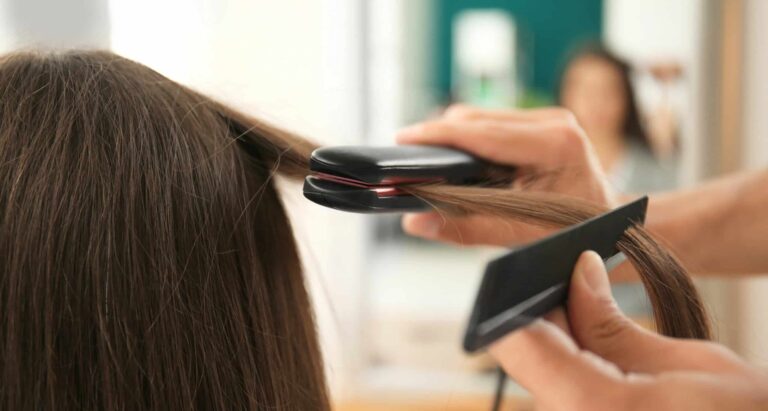That fresh-out-of-the-salon blowout comes with bounce, volume, and shine that is almost impossible to replicate at home. Every movement feels effortless as if your hair has been living its best life under professional hands; the strands fall just in place. But replicating that same elegant lift and perfect finish can feel like chasing a mirage. Though the products are arranged, the equipment is within reach, and the mirror reflects great hopes—often, the outcomes fall short. What’s missing is a better knowledge of the mechanics underlying professional blowouts, not magic.
The Role of Hair Tension and Sectioning in Achieving a Salon-Level Finish
Expert stylists deliberately regulate tension and sectioning to create their unique style. These two elements decide if your hair lays limp or confidently stands. The entire smoothness and shape are affected by the stylist’s grip and brushwork, which together preserve constant, even tension from root to tip. They also split hair into neat, equal pieces so that heat is distributed fairly, and every strand is groomed with purpose. Skipping or rushing at these stages at home causes missed patches, inconsistent volume, and flyaways that compromise the overall design. By replicating this technique—using clips to divide the hair, maintain a firm hold, and slowly work each section from roots through the ends—you can produce more polished results.
The Impact of Professional Tools on Hair Texture, Shape, and Longevity
The result is highly influenced by the tools salons employ. Professional-grade dryers reduce drying time by concentrated heat and strong airflow, improving style retention. Often using ionic technology to trap moisture and lower frizz, these dryers produce a smooth, glossy finish. Brushes also make a difference; ceramic or boar-bristle choices grip the hair without pulling and help generate tension during blowouts. The outcome lacks the structure found in salon finishes whether you try the look at home with a lesser dryer or a brush without grip. Beyond the blow-dryer itself, follow-up tools like a 1.25 inch curling iron can refine your shape and merge parts, especially at the ends, delivering that smooth, sculpted touch that finishes the appearance.
The Hidden Importance of Hair Prep and Product Layering Before Styling
Long before the blow-dryer turns on, a stylist starts the process. From washing with the correct recipe to applying focused styling products, every stage of preparation creates the groundwork for long-lasting effects. Specifically, increasing root lift, maintaining form, and insulating hair from heat are lightweight mousses, volumizing sprays, and thermal protectants. At home, it’s easy to overdo heavy cream or overlook important steps, which results in a weighted-down or frizzy finish. The specialists carefully layer products that fit your hair’s needs and the objectives of the design. Even a perfect technique can fail in the absence of an equilibrium. Establishing a schedule that reflects this sequence—light to heavy products, with purpose behind every application—brings control and organization back into your hands.
Blow-Dry Technique That Elevates the Roots Without Flattening the Crown
Blowout perfection begins at the roots. The distinctive lift and body that identifies a salon finish comes from this section. Using a round brush, stylists raise hair upward and concentrate on airflow at the root. This movement guarantees the crown area’s volume and guarantees the hair does not go flat after a few hours. Most at-home routines either hurry through portions without lift or angle the drier downward too soon, therefore flattening the roots. Starting with a brush under the root, heat while pulling upward, then follow the brush through the mid-lengths and ends to avoid this. The bounce of hair is determined by timing and angles; for a longer-lasting style, repeated passes help lock that curve into place.
Finishing Moves That Lock the Look into Place Without Adding Weight
Once the shape is established, stylists apply key steps to keep the style in place while retaining its softness and movement. These include lightly brushing the hair to smooth transitions, utilizing the cool shot function on a blow-dryer to seal each area, and adding a dry texture spray or lightweight hairspray to maintain volume without stiffness. Ignoring these final details will undo all the work and produce hair that deflates or frizzes before the day finishes. Professionals know that establishing a style is about securing the shape while allowing the hair to move naturally rather than freezing it in place. These final details distinguish a blowout that falls after two hours from one that lasts long into the next day.
Conclusion
The secret to salon-quality blowouts is a series of actions, not just tools. It takes more than just a hot dryer and good intentions to achieve that polished look. By means of sectioning, consistent tension, quality equipment, deliberate product preparation, and confident finishing, you will be able to take control. Every phase adds shape, hold, or softness, piling together into a look that resists simple imitation of the stylist’s work by holding up under real-life movement and time. With these considerations, you are no longer chasing a professional finish. You’re creating it.

